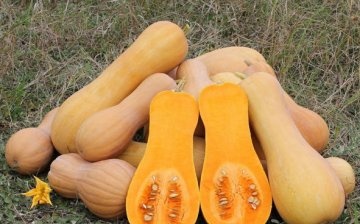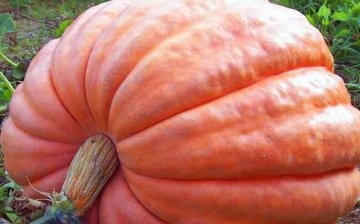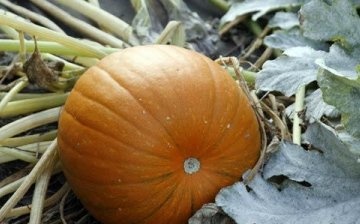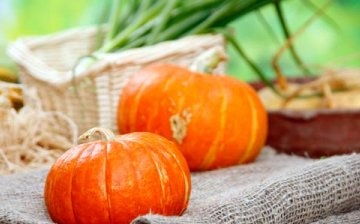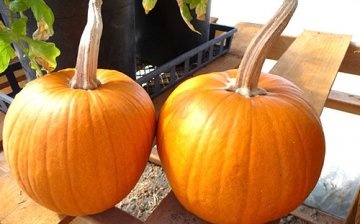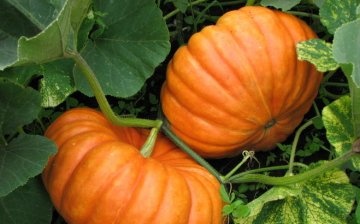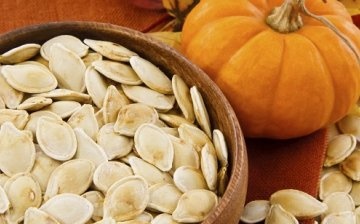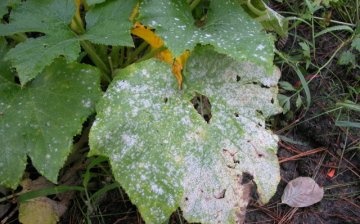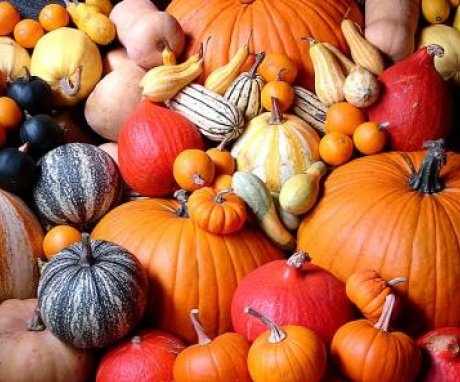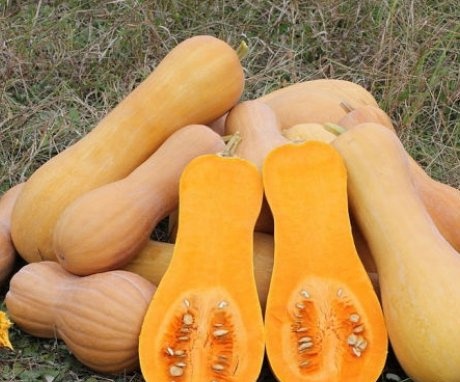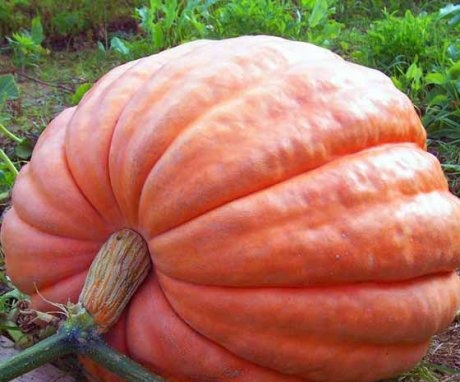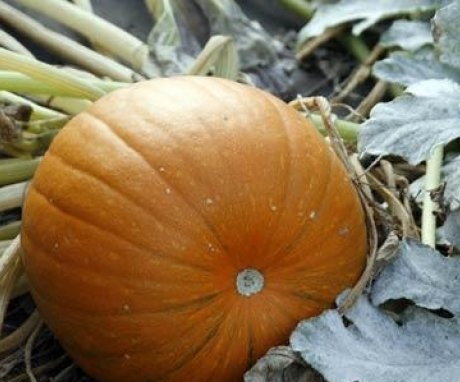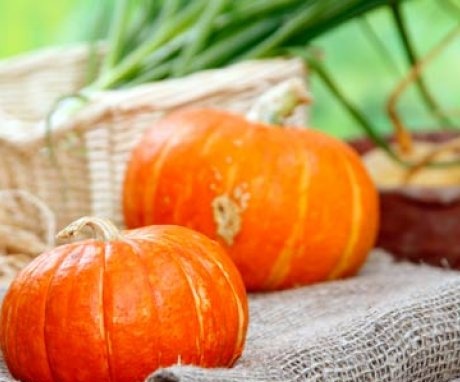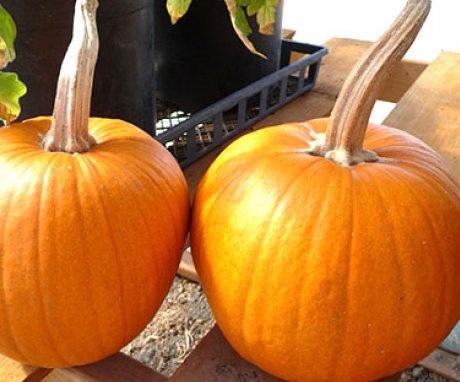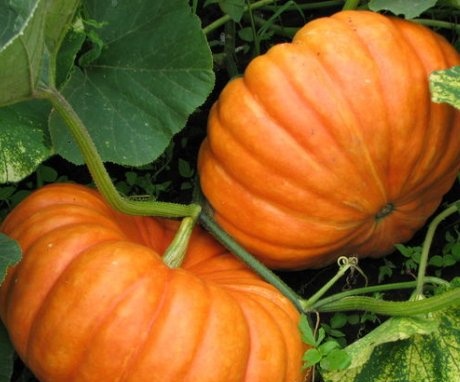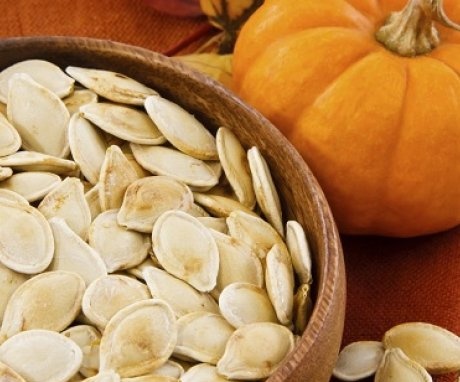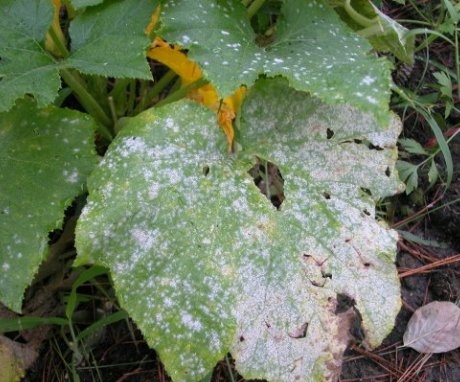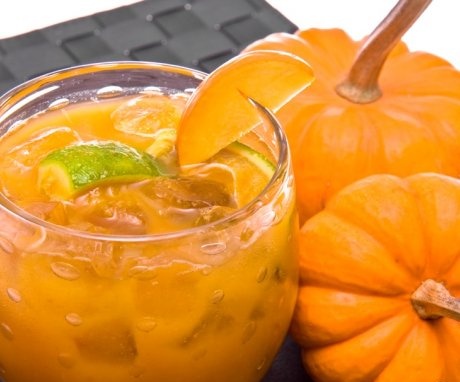Description and cultivation of the best pumpkin varieties on your site
Pumpkin porridge is familiar and loved by many since childhood. The fruits of this plant are grown in almost every summer cottage and garden. Pumpkin pulp and seeds have a lot of useful properties, thanks to the many vitamins and minerals that make up the product.
Content:
- General information about pumpkin
- Muscat varieties
- Large-fruited varieties
- Hardcore varieties
- Sweet varieties
- Winter varieties
- Care Tips
- Reproduction
- Diseases and pests
- Pumpkin application
General information about pumpkin
Pumpkin - It is a perennial herb with long curly branches. Belongs to the pumpkin family. His homeland is America. In countries with cold climates, it is grown as one-year-old... Its branches are long, curly, thick, fleshy, covered with small hard fibers. The leaves are large, carved, rough from the top, and covered with small, hard fibers from the bottom.
The size of the leaf can be up to 30 cm in diameter. They are not densely located on the stems, on tall cuttings. The flowers are large, five-petalled, colored in a rich orange tone. The fruits are large, mainly edible varieties. The pulp is juicy, thick, and has a sweet taste. The shape and size of the fruit, as well as the color of the skin, depends on the plant variety.
Pumpkin pulp and its seeds have many beneficial properties that have a beneficial effect on the human body.
Pumpkin is represented by a large number of varieties on the seed market. Every year, breeders bring out new species with improved taste or vitamin qualities, as well as those plants that are used on an industrial scale. Among the entire list, each summer resident chooses the best varieties for himself pumpkin.
Muscat varieties
Butternut pumpkin varieties for cultivation:
- Arabat pumpkin. The fruits of this variety form a cylindrical elongated shape, ripen by the middle of the season. The mass of one medium fruit can be from 5 to 9 kg. There are giants whose weight can reach 20 kg. The peel of the fruit is orange with a light grayish bloom. The pulp is dense, thick, sweet on the palate, juicy, colored in an orange tone. It lies well and for a long time if there is no damage to the fetus.
- Pumpkin Gilea. The fruit is medium in size, has a round shape, which tapers towards the bottom, weighs up to 9 kg. The pumpkin ripens by the middle of the season. The peel is orange, glossy, firm. The pulp is orange, rich in color, juicy, firm, sweet and crunchy. Suitable for juices and cooking porridge. The variety is resistant to common diseases.
- Pumpkin Polyanin. The fruits ripen in the middle of the season. The pumpkin grows into an oblong oval shape with barely visible ribs. The peel is glossy, smooth, orange in color. The weight of one fruit is about 4 kg. Juicy and firm pulp is easy to boil when cooking porridge. Undamaged fruits are well transported and stored for a long time.
- Pearl pumpkin... The fruits of this variety ripen by the end of the season, their shape is oblong, cylindrical. The peel is colored grayish green.Ribs are poorly expressed. The weight of one fruit is about 7 kg. The pulp is colored orange, rich in color and has a sweet taste, juicy. Fruits are stored for a long time if they are not damaged.
Large-fruited varieties
The best large-fruited pumpkin varieties:
- Kherson pumpkin. This variety is late ripening. Fruits are formed of medium size, oval-flattened, with pronounced ribs, the maximum weight of one pumpkin does not exceed 6 kg. The peel is greenish-gray, dark green on the side of contact with the ground. The pulp is thick, juicy, dense in structure, has a sweet, rich taste. Can be stored for a long time. Resistant to many diseases.
- Zhdan's pumpkin. You can harvest the fruits already in the middle of the season. The pumpkin is formed of medium to large size, oval and flattened, with pronounced ribs. The rind is light gray. The weight of one fruit ranges from 6 to 8 kg. The pulp is orange, thick, firm, juicy, has a pleasant sweetish taste. Stored for a long time and tolerates transportation well. Disease resistant.
- Pumpkin Slavuta. The fruits ripen late, towards the end of the summer cottage season. The pumpkin is formed round, slightly flattened, of medium size. The average weight of one fruit is 3-3.5 kg, there are specimens weighing 10 kg. The peel is hard, greyish-green with dark spots. The pulp is rich in orange tone, sweet, friable. The variety is resistant to diseases.
- Pumpkin Khutoryanka. Fruit ripening occurs at the end of the season. The pumpkin has a cylindrical shape, the skin is painted in a dark green tone. The weight of one fruit is on average from 7 to 10 kg. The pulp is yellowish, juicy, of small thickness, sweetish in taste. Stored until mid-winter.
Hardcore varieties
Description of hard pumpkin varieties:
- Gymnospermous pumpkin... The fruits of this variety are round. The bark is firm, but thin, colored in a rich yellow color with small green stripes. The average weight of one fruit is 5 kg, but there are fruits whose weight can reach up to 16 kg. The pulp is light yellow, juicy. Pumpkin seeds do not have a hard shell.
- Ukrainian multi-fruited pumpkin. This variety has early ripening periods. The fruit is oval in shape, small in size, the maximum weight does not exceed 8 kg. The skin of the pumpkin is colored in a light orange tone with green, not pronounced stripes. The pulp is orange in color, juicy and has a sweet taste. The variety is resistant to dry periods.
- Mozolievskaya 15. The variety belongs to the mid-season. The fruits are large, the maximum weight is up to 8 kg. The shape of the pumpkin is oval-cylindrical, the peel is hard, colored yellow-orange with green stripes. The pulp is firm, juicy, has a sweet taste, and is colored yellow. The variety is resistant to common diseases.
Sweet varieties
Description of sweet pumpkin varieties:
- Pumpkin Freckle. The fruits of this variety are medium in size, oval and slightly flattened, the weight of one varies from 1.5 to 3 kg. The peel is dense, thick, yellow-green, smooth, with dark spots. The pulp of the fruit is dense, juicy, of medium thickness, sweet, has a rich taste. Ripening is early, 2.5 months after a larger number of shoots have emerged. The bush is compact, the leaves are dark green with a marbled pattern.
- Pumpkin Smile. The variety is early maturing. Fruits are small in size, spherical, weighing no more than 1.5 kg. The rind is deep orange with orange stripes along the ribs, smooth. The pulp is sweet, juicy, colored in an orange tone. The fruits are convenient for single use due to their small size. The variety is bred drought-resistant. Also, the plant is adapted to slight cold weather.
- Pumpkin Spanish guitar. The fruits of this variety are distinguished by their high taste. The pumpkin is elongated, similar to a squash. The rind is of medium density, greenish-yellow in color.The pulp is juicy, sweet, tastes like apricot, therefore it is often used in jams and sweet culinary dishes. The weight of one fruit is from 2 to 5 kg.
Winter varieties
The best winter varieties for growing:
- Mushroom pumpkin. This variety ripens late, lies well and has a long shelf life of up to 7 months. The shape of the fruit is spherical, slightly flattened, the peel is gray, the ribs are not pronounced. The pulp is bright orange, juicy, firm, sweet. The variety is characterized by increased yield... The weight of one fruit weighs on average 5-7 kg.
- Don sweet pumpkin. The fruits are large, oval, slightly flattened. Ripening time is mid-season. The peel is thick, dense, tinted greenish-gray, the ribs are pronounced. The pulp is juicy, sweet, thick, colored orange. Fruits weighing up to 8 kg. It is well transported and stored for almost the entire winter period.
Care Tips
For disembarkation pumpkin you must choose a well-lit place. It is desirable that the soil is fertile, it is recommended to pre-dig the area along with the compost. After planting seedlings, the land under the bush can be mulch using grass, peat or compost.
Pumpkin is not demanding for watering and grows well and develops in arid conditions.
But for large fruits and good harvest it is recommended to regularly and abundantly water the plant, especially during the period flowering and fruit growth. After watering, the soil is loosened and removed weeds... This operation is carried out carefully, since the root system of the plant is not deep.
After 3-4 adult leaves have grown on the branches, the stems break off. This operation is carried out so that 2-3 fruits are formed on one stem. In this case, all the nutrients that the root system takes from the ground will go to the pumpkin, and not be spent on the formation of new leaves, flowers and fruits.
The flowers on the bushes are bisexual, so there should be no problems with pollination. But if during the flowering period the weather is cloudy for a long time and there is a risk of losing the crop, then the pollination process can be carried out independently with the help of a powder brush. Each flower is dipped in each other's pollen, passing from one to another in turn.
Reproduction
Pumpkin propagates with the help seed... There are two ways to plant a plant. In the first case, the seeds are sown in open ground... To do this, it is necessary to wait for stable warm weather so that the soil has time to warm up deeply. Holes are prepared at a distance of 80-90 cm from each other. 2-3 grains are laid out in each and sprinkled on top with a small layer of earth. After a while, shoots should appear.
You can prepare seedlings in advance. They are laid out on a saucer on damp gauze and placed in a place where the seeds will receive enough light and heat, for example, on a windowsill. The gauze is constantly moisturized. After 1-2 days, the grains will hatch and they can be planted.
The second method of planting pumpkin is by seedling:
- The seeds are planted in special boxes or peat cups at the end of March.
- The substrate should be loose, good for water and air permeability, and fertile.
- Seeds pre-soak before pecking.
- 1-2 grains are placed in each separate glass, the excess can later be removed.
- The container with crops is placed in a warm place with good lighting.
- After a while, the seeds hatch, and when two adult leaves appear, the extra shoots are removed.
- When planting in a common box, sprouts dive in separate containers together with an earthen lump.
When the soil warms up enough, the seedlings can be planted in a garden or plot. For this, holes are prepared, and each individual bush is planted together with an earthen clod.
Planting is best done on a cloudy day or in the evening, so that the daytime sun does not burn the young bushes too much.
It is recommended to feed the pumpkin before the ovaries appear. Well suited for this mineral and organic fertilizers. After top dressing, all the bushes are well watered.
For decorative varieties and varieties that curl, it is necessary to install supports. They can be planted near the fence in the spring or a special net can be installed. The fruits of ornamental varieties weigh a little, so they will decorate a wall or fence until the very snowfall. Table varieties usually produce large fruits. If the bush stretches out on a support, and the fruit weighs high, it must be placed in a string bag, which is hung along with the unbroken fruit. In the net, the pumpkin will fill up to the required state and ripen, and its weight will not break off the branches.
Diseases and pests
Many varieties and hybrids pumpkin bred resistant to various common diseases... However, in some cases, the bushes are susceptible to certain ailments:
- Powdery mildew manifests itself as white spots that cover the leaves and stems of the pumpkin. Then it goes on to the fruit, in which it causes rotting. When such a disease appears, it is recommended to completely remove the diseased bush. Such an ailment occurs with constant dry weather and a lack of moisture for the plant; it also contributes to a sharp temperature drop between day and night.
- Anthracnose. it diseases can appear both in a young plant and in an adult fruiting bush. This fungal disease appears as round yellow spots on the leaves. Black spots damage the stem and root collar of the plant, which can lead to the death of the entire bush.
- To prevent various fungal diseases, pumpkin is recommended to be planted in a new place every year. The pumpkin can be returned to the former place of growth only after the expiration of 5 years. Also, in the spring, when flowering has not yet begun, the plants are treated with special means.
- Periodically, aphids appear on such plants. Such a pest can be easily defeated with the help of an ordinary soap solution, with which all infected and non-infected plants are treated. The procedure is carried out 2-3 times with 5 day breaks.
Pumpkin application
The main use of the fruit pumpkin found in cooking. Porridges, juices are prepared from it, and added as a component to a dish. Due to the fact that winter varieties are stored well and for a long time, pumpkin can be used until the spring months. It is used on a domestic and industrial scale.
There are also bottle gourds, these are not common varieties in the regions of Russia. Dried fruits are used as containers for storing liquid and dry products.
Ornamental pumpkin varieties are not used in cooking, they serve to decorate the territory of the garden or suburban area.
In cooking and cosmetology, oil is used, which is squeezed from pumpkin seeds. It has a calming effect and has a beneficial effect on the skin if it is included in creams or masks. Growing pumpkin is a fairly common thing. Every year new varieties of this plant are discovered for amateur gardeners.
More information can be found in the video.





